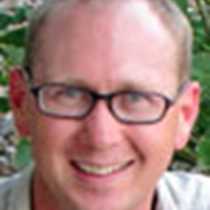Barro Colorado Island and the Gatun locks
This morning we explored the rainforest through the eyes of scientists at Barro Colorado Island. BCI is a tropical research station operated by the Smithsonian. The island formed during the building of the Panama Canal when Gatun Lake was flooded. Originally connected to the mainland but now isolated by water, it provides a perfect natural laboratory. Over many decades, the researchers at BCI have contributed significantly to our understanding of tropical ecology.
In addition to the local residents of BCI (such as red-eyed tree frogs, Geoffroy’s tamarins, and slaty-tailed trogons) are the scientists. We learned from them how research on BCI has helped us better understand the connections among organisms in this complex environment. Despite our focus on the big and charismatic organisms such as jaguars and monkeys, it turns out that the insect-eating bats and birds are critical in maintaining balance in the forest. The little things do matter when it comes to biodiversity. The knowledge produced by BCI and the ongoing research is impressive, yet there is still a lot that we don’t know. In the quest to preserve biodiversity, knowledge is fundamental.
In the afternoon, we made our final voyage out of the freshwater canal and back to the sea through the Gatun Locks. The operation was awe inspiring as we watched enormous “pana-max” vessels squeeze through the locks with absolute precision and dock workers coordinate their movements like a dance performance. Although this massive human construction at first seems at odds with the little creatures back on BCI, there are many parallels that we can find in terms of human ingenuity. The canal was a result of necessity, technology, and perseverance. We are now in an age where we face different challenges, including global warming and loss of biodiversity, but seeing the innovative work that scientists do to better understand the natural world is encouraging. They employ impressive molecular techniques, remote-sensing cameras, and complicated computer modeling to address these issues in an uphill race against time.
We leave our adventure knowing that our species has the potential to do amazing things. One hundred years later, the Panama Canal is still innovative and inspiring. One hundred years from now we can hope that future generations will look back at the actions we take today to preserve the world’s biodiversity and be equally impressed. Our experience today at BCI with their enthusiastic young scientists makes the future look bright.




